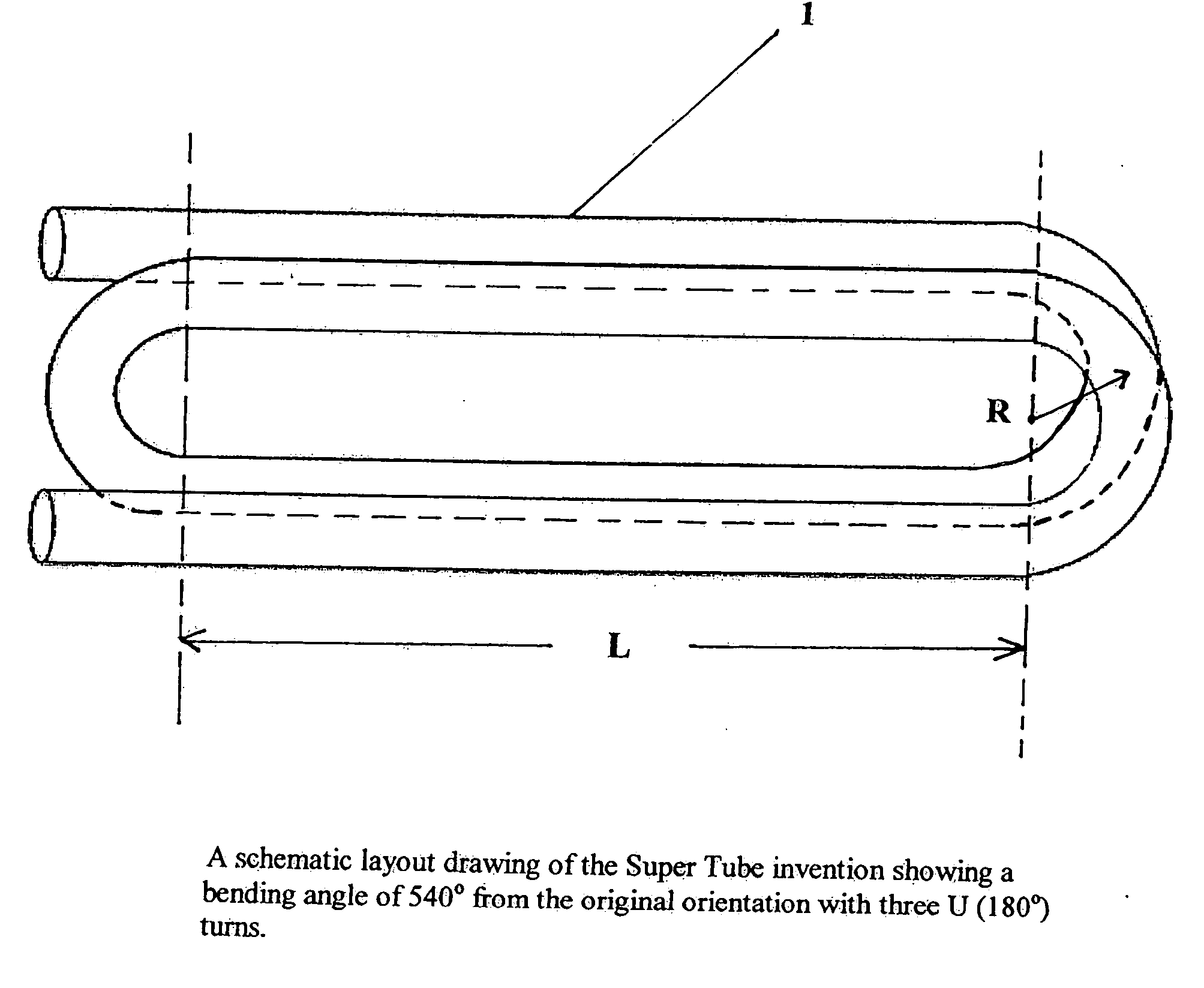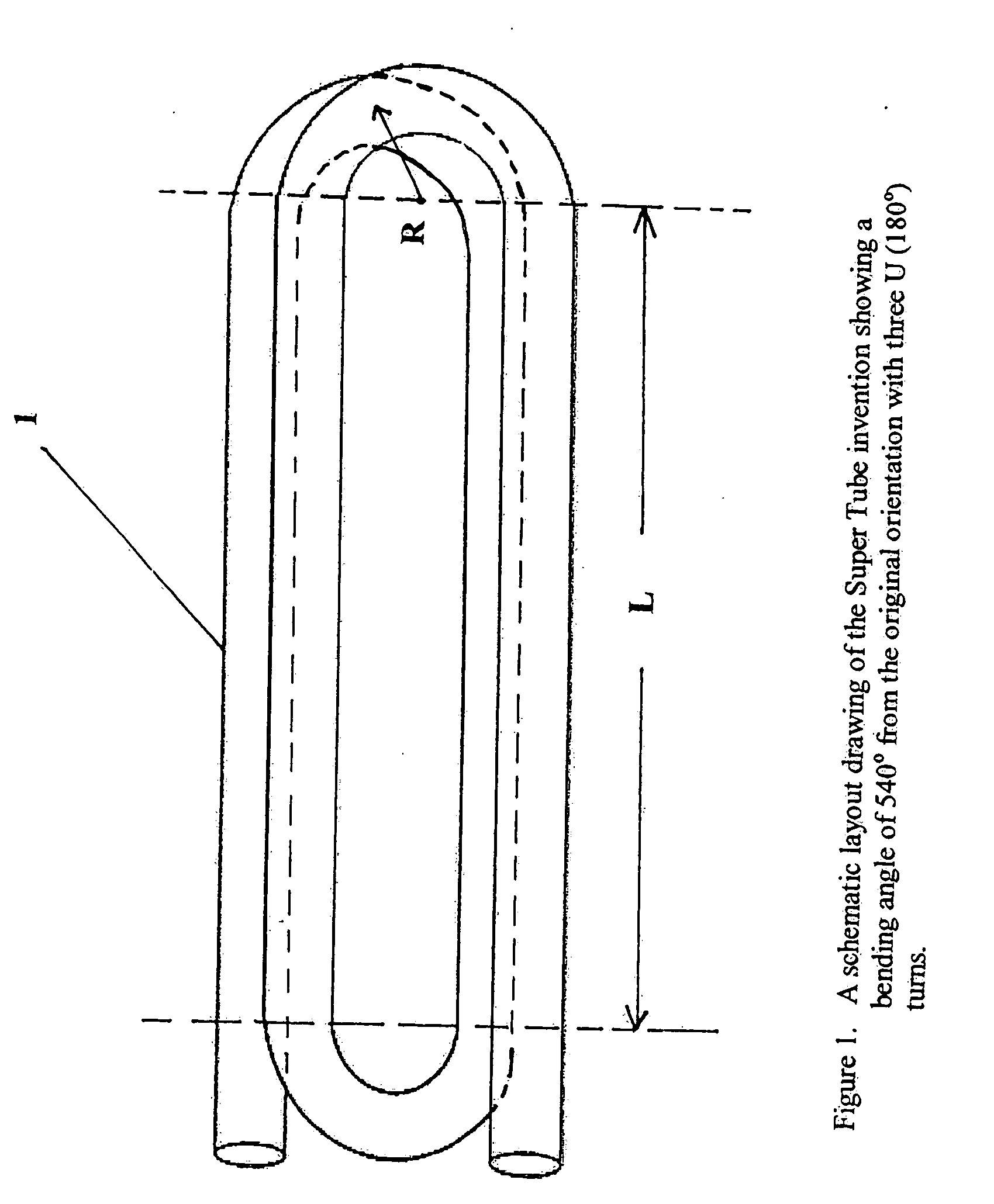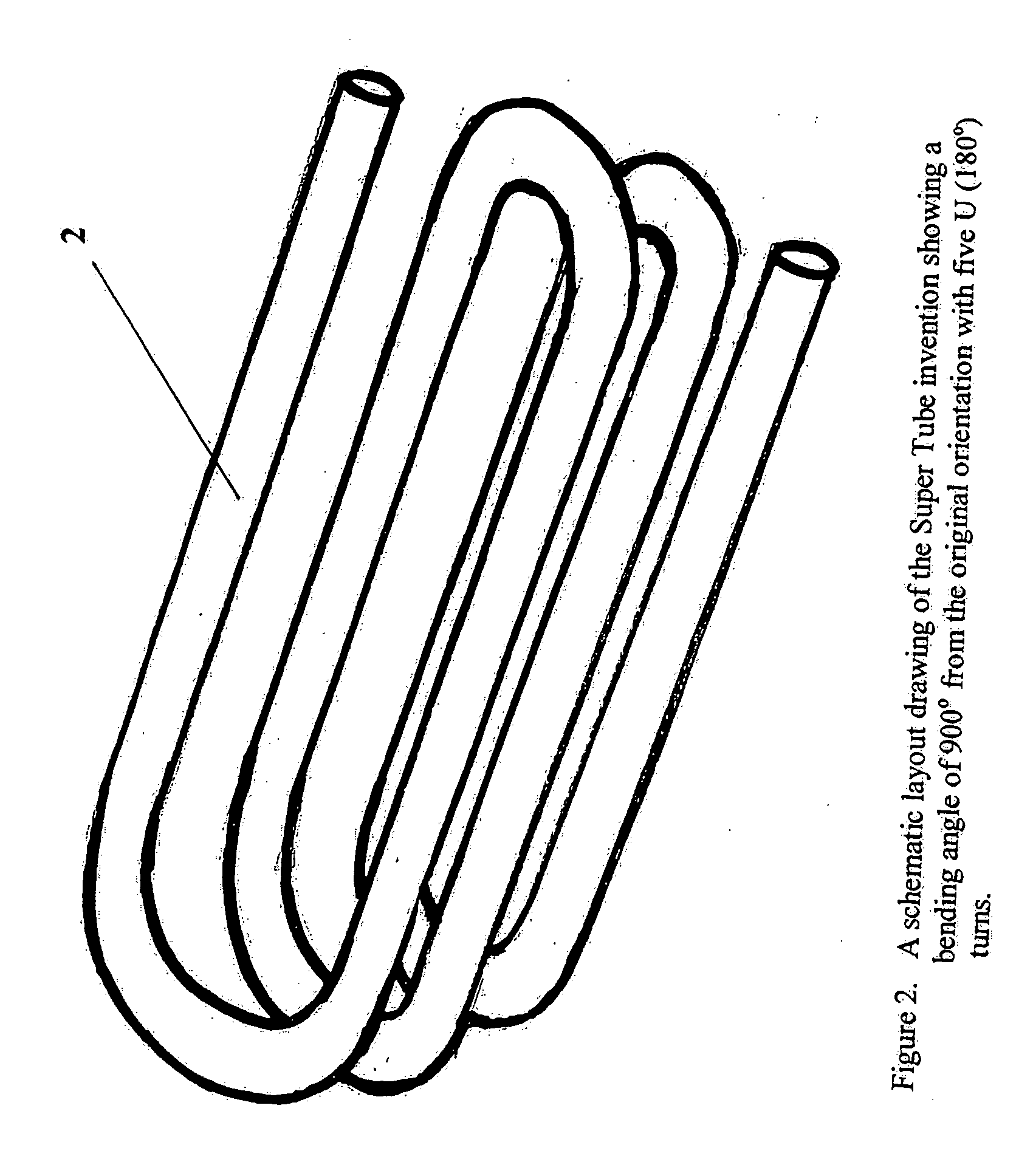Method for detecting a gas species using a super tube waveguide
a gas species and super tube technology, applied in the field of gas analysis, can solve the problems of large number of white cells used in gas analyzers for commercial use, long-term drift and non-specificity problems, and the use of white cells is confined mainly
- Summary
- Abstract
- Description
- Claims
- Application Information
AI Technical Summary
Benefits of technology
Problems solved by technology
Method used
Image
Examples
Embodiment Construction
[0026] For over two decades, the present inventor diligently worked on simple, rugged and low-cost NDIR gas sample chambers culminating in the so-called “wave-guide” sample chamber invention disclosed in U.S. Pat. No. 5,163,332 (1992). Indeed, for gases with moderate to strong absorption bands in the mid-infared spectral region like CO2 (4.26 μm), H20 (2.7 μm), CH4 (3.4 μm) etc., the optimum and simplest gas sample chamber is a hollow straight metallic tube with arbitrary cross-section but speculatively reflective inner walls very much likened to a standard microwave wave-guide. Today after over a decade has gone by since the advent of the “wave-guide” gas sample chamber (a.k.a., “The Tube”), most of the reliable, rugged, sensitive and low-cost CO2 sensors use this design, rendering a host of new applications, including faster and false-alarm resistant fire detectors and Demand Control Ventilation (DCV) strategies for saving energy in high-rise office and commercial buildings, many ...
PUM
 Login to View More
Login to View More Abstract
Description
Claims
Application Information
 Login to View More
Login to View More - R&D
- Intellectual Property
- Life Sciences
- Materials
- Tech Scout
- Unparalleled Data Quality
- Higher Quality Content
- 60% Fewer Hallucinations
Browse by: Latest US Patents, China's latest patents, Technical Efficacy Thesaurus, Application Domain, Technology Topic, Popular Technical Reports.
© 2025 PatSnap. All rights reserved.Legal|Privacy policy|Modern Slavery Act Transparency Statement|Sitemap|About US| Contact US: help@patsnap.com



